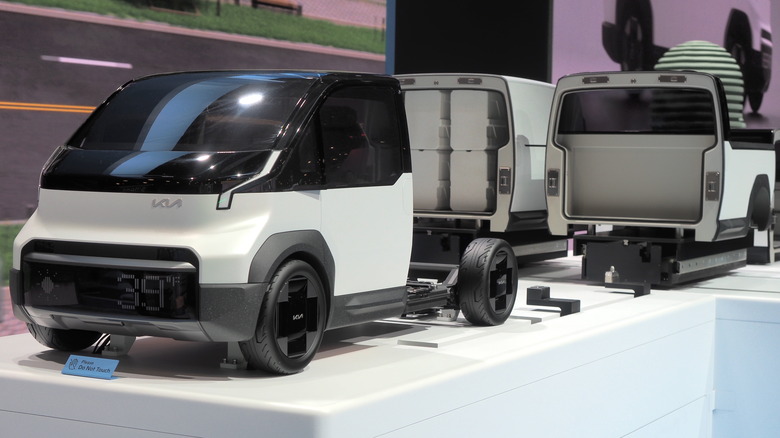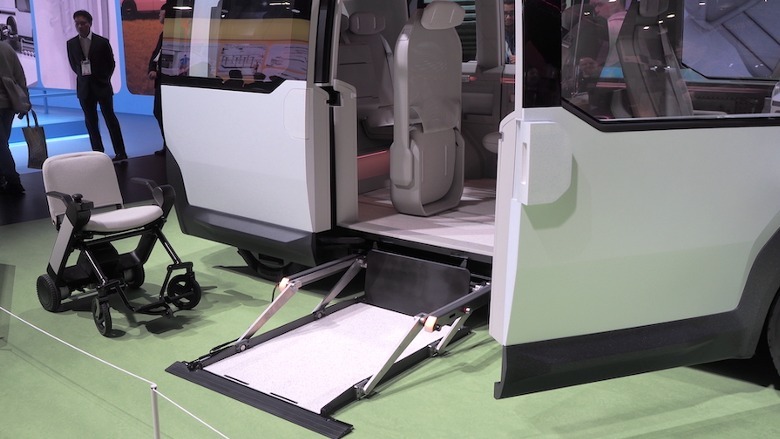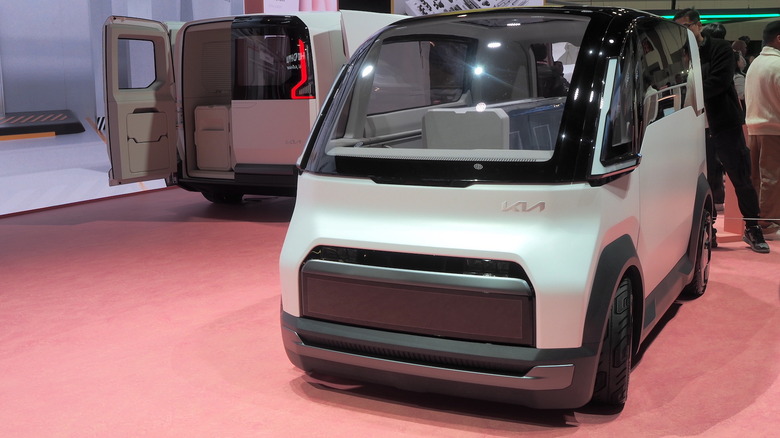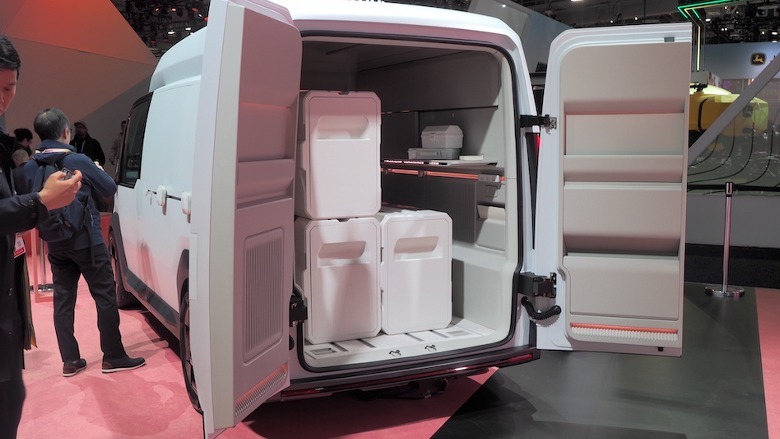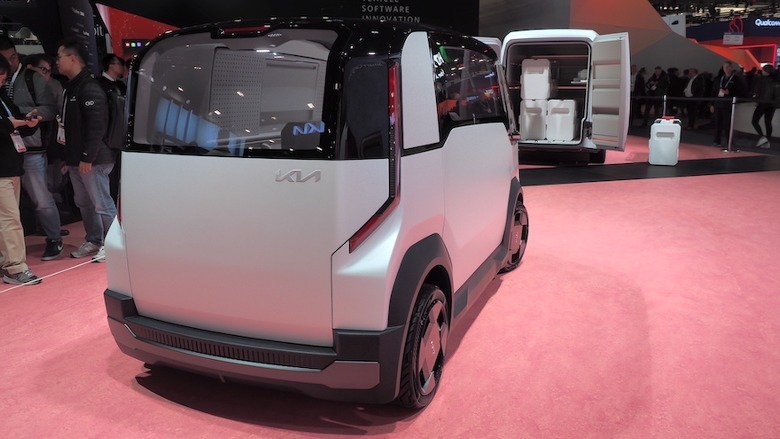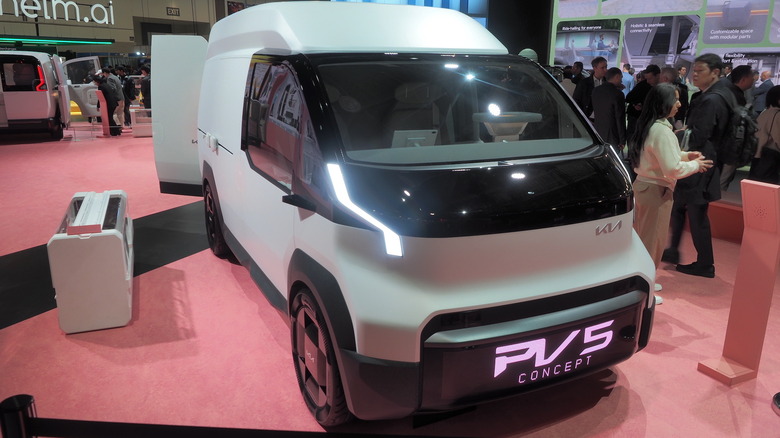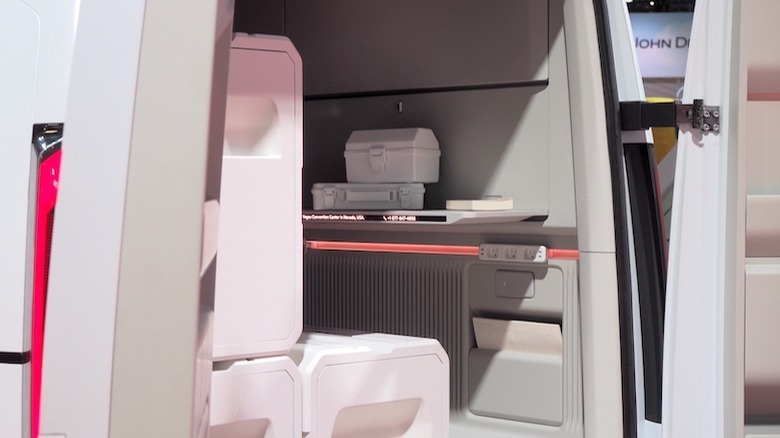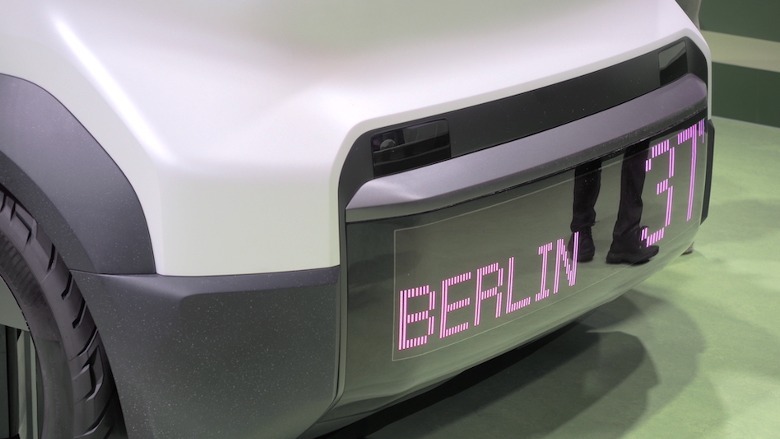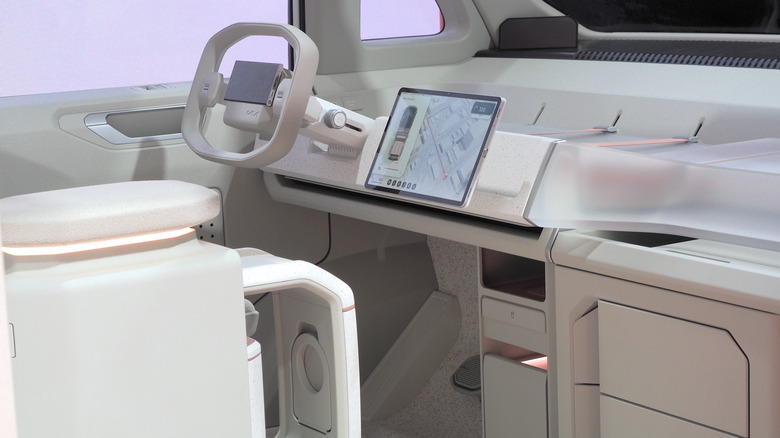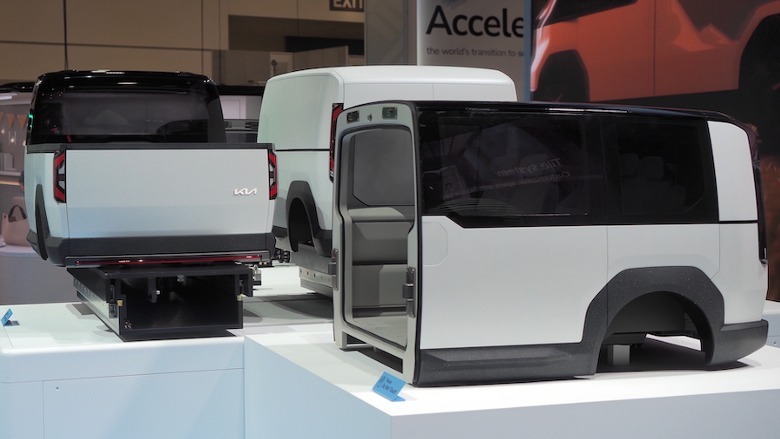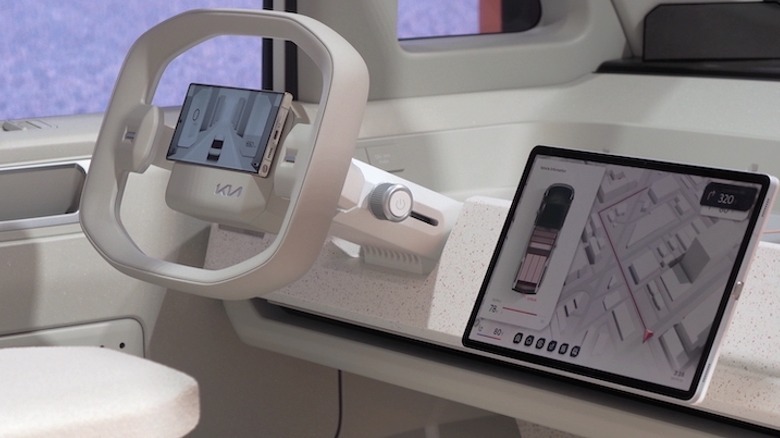CES 2024: Does Kia Have What It Takes To Rewrite The History Of Modular EVs?
Vans, cabs, and delivery vehicles might not be as exciting as super-fast EV sports cars and luxury electric sedans, but they're just as important in the transition away from internal combustion engines. That's why, alongside its eye-catching EV3, EV4, and EV5 concept cars at CES 2024, Kia brought along its vision of what electrified fleets might look like in the not-too-distant future.
Despite what the name suggests, the Kia Platform Beyond Vehicle (PBV) isn't one new model, but a whole ecosystem of flexible EVs. It's not a new concept: what's fresh is that, for once, it could actually work.
Initially, there'll be the Kia PV5, an electric delivery vehicle offered in a variety of body sizes and styles. Down the line, though, there'll be a smaller PV1 for last-mile city logistics, and a bigger PV7 with more space and range. Kia is even planning a taxi version, including an autonomous robotaxi built on Motional technology.
What distinguishes these ostensibly very different EVs is the fact that, under the various bodies, the core platform is shared. If we're going to be seeing these electric vans on the road — or delivering packages and groceries — then they need to be easy to deploy. That means a single chassis, atop which interchangeable upper portions (Kia refers to as "life modules") can be electromagnetically attached. One PBV could be a delivery vehicle during the day, a taxi at night, and even turned into a camper van for recreational use at the weekend.
Not a new idea, but a difficult one
The idea of a single electric vehicle platform that can be applied to a variety of vehicle sizes and purposes isn't new. Indeed, the strategy has been suggested as one of the key advantages of electrification from the early days of the EV transition: Taking a common architecture, often including the battery, electric motors, power management and control hardware, and packaging it into a single slice or "skateboard." That could then be topped with a variety of body styles, from minivans and pickup trucks, through to sedans and sports cars.
The appeal was even more obvious for EV-makers aiming to help companies convert their business fleets to electric. Startups like Canoo and Bollinger Motors raised their profiles — and plenty of investment — with the promise of a single, highly-flexible architecture that could underpin everything from compact urban delivery vehicles, through to larger vans and trucks, along with people-movers for ride hailing services.
That's yet to pan out in practice. While automakers, like VW Group with MEB, have multiple models using the same core platform, none of the EV upstarts have managed to convert their glossy concepts into deployed fleets.
Money talks
On that front, you'd be forgiven for being skeptical about what Kia is suggesting here. The "Platform Beyond Vehicle" business sounds a lot like strategies we've heard before: Tailor custom conversions for fleets, with real-time monitoring in the cloud, and use a rail-based system of interior outfitting so that storage, functional accessories, and more can be swapped in and out at will.
What undoubtedly distinguishes Kia's approach from that of other would-be EV-makers isn't so much the strategy, as the capital to make it happen. Canoo — though tipped at one point to be a potential acquisition target for Apple — has struggled, just like most startups in the electric space, to bankroll its ambitious plans.
Money is far less of an issue for Kia and Hyundai Group as a whole. While the South Korean auto behemoth doesn't wield a completely blank check book, its finances certainly permit a far more rapid launch. A new, PBV-dedicated plant in Korea could be online in 2025, and capable of producing up to 150,000 units each year.
Beyond gimmicks, there's an important EV here
Certainly, Kia isn't immune to the temptation to add eye-catching, borderline-gimmicky features. A steering wheel, for example, that slides back and pivots upright to turn into a desk lamp is fun, but it definitely feels like trade show glitter. Cabins that look more like glossy sci-fi lounges, all white and pale gray, would probably struggle to hold up to the day-to-day reality of delivery services or ride-hailing.
Then there's the fairly nebulous tie-ins with Hyundai Motor Group's various other ventures. After spending considerably on Boston Dynamics' robots business, Kia's idea of using Stretch and Spot robots for automated logistics and quality control feels like a solution in search of a problem. Tapping Motional's planned Level 4 autonomous driving systems for future robotaxis seems similarly vague.
Nonetheless, there's no denying that as electrification becomes the norm in transportation — not just for individuals, but commercial driving — solutions like PBV will probably look increasingly tempting. The early successes of GM's BrightDrop vehicles are evidence of that: the backing of a familiar brand name, combined with the promise of manufacturing and support at scale (and won't disappear after one or two bad quarters) could help thread the needle through what's going to be an expensive transition. Kia's eventual modular electric vehicles might not look as glittery as its CES concepts, but there's certainly space for a more sober reality on the road.
